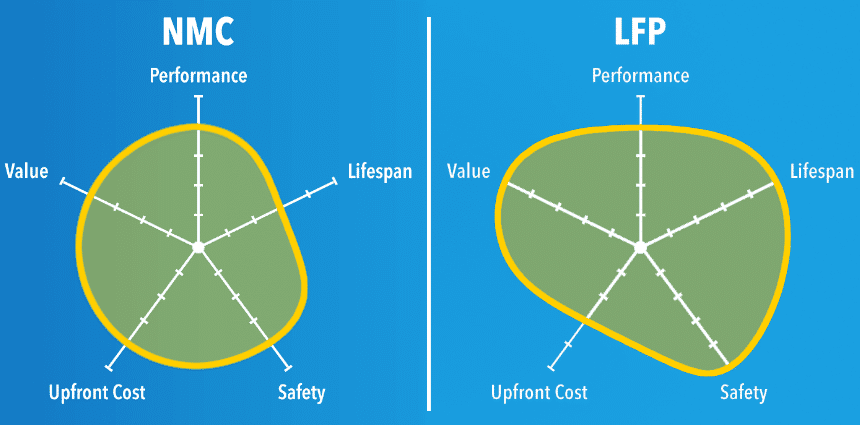Siratseo
Moden Gjerrigknark
Ble Medlem: 14 Mar 2023
Innlegg: 204
   
Tirsdag 23 April 2024, 17:40 |
 |
 |
LiFePO4 (lithium iron phosphate) and NMC (nickel manganese cobalt oxide) batteries are both types of lithium-ion batteries but differ significantly in their performance characteristics, catering to different applications and requirements. Here are some of the key differences: LiFePO4 vs NMC lithium batteries

Energy Density: NMC batteries have a higher energy density compared to LiFePO4 batteries. This means that NMC batteries can store more energy for the same amount of physical space, making them more suitable for applications where size and weight are critical factors, such as electric vehicles and portable electronics.
[list=]Thermal Stability and Safety: LiFePO4 batteries are known for their excellent thermal stability and safety. They are less prone to thermal runaway and are more stable under high temperature conditions compared to NMC batteries. This makes LiFePO4 a safer choice for stationary storage applications and environments where safety is a top priority.[/list]
[list=]Cycle Life: LiFePO4 batteries typically offer a longer cycle life than NMC batteries. They can endure more charge and discharge cycles before their capacity falls below 80% of their original capacity. This makes them more suitable for applications where the battery is frequently charged and discharged, like solar energy storage systems.[/list]
[list=]Cost: Historically, LiFePO4 batteries have been more expensive in terms of cost per watt-hour compared to NMC batteries. However, the cost differences have been narrowing as production technologies improve and the raw materials for LiFePO4 (which are generally less costly and more abundant) become more widely used.[/list]
[list=]Voltage: LiFePO4 batteries typically have a lower nominal voltage per cell (around 3.2V) compared to NMC batteries (around 3.7V). This difference in voltage may affect the design of the battery management system and the overall system architecture.[/list]
[list=]Charging Characteristics: LiFePO4 batteries can often be charged and discharged at higher rates than NMC batteries without significant degradation, making them suitable for applications requiring rapid charging and discharging.[/list]
[list=]Environmental Impact: LiFePO4 batteries are often viewed as more environmentally friendly due to the absence of cobalt, a controversial and less abundant material used in NMC batteries. Cobalt mining has been criticized for ethical issues related to mining practices, particularly in the Democratic Republic of Congo.[/list]
In summary, while NMC batteries are typically preferred for applications requiring high energy density and compact solutions (like electric vehicles and personal electronics), LiFePO4 batteries are favored in applications where safety, longevity, and environmental impact are more critical, such as in stationary storage and backup power systems. Each type of battery has its niche, and the choice between them often depends on the specific requirements and constraints of the application. |
|
|





